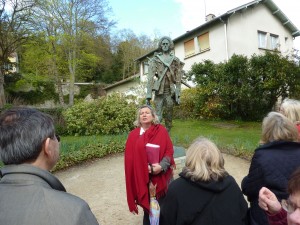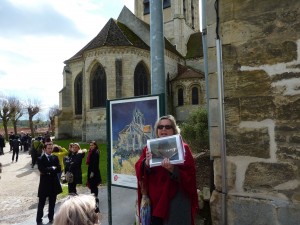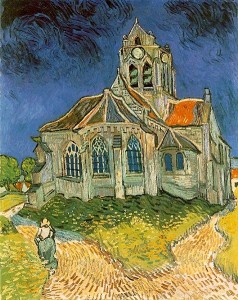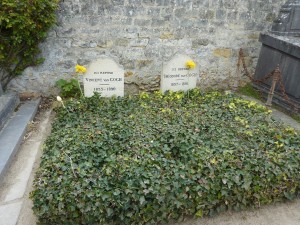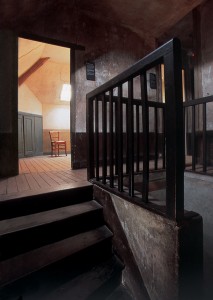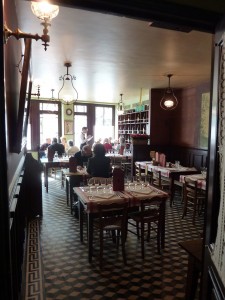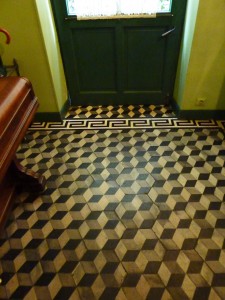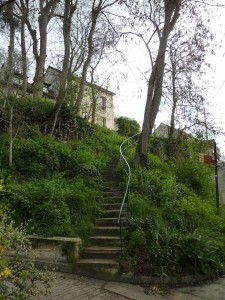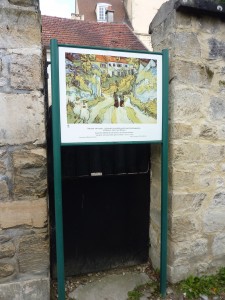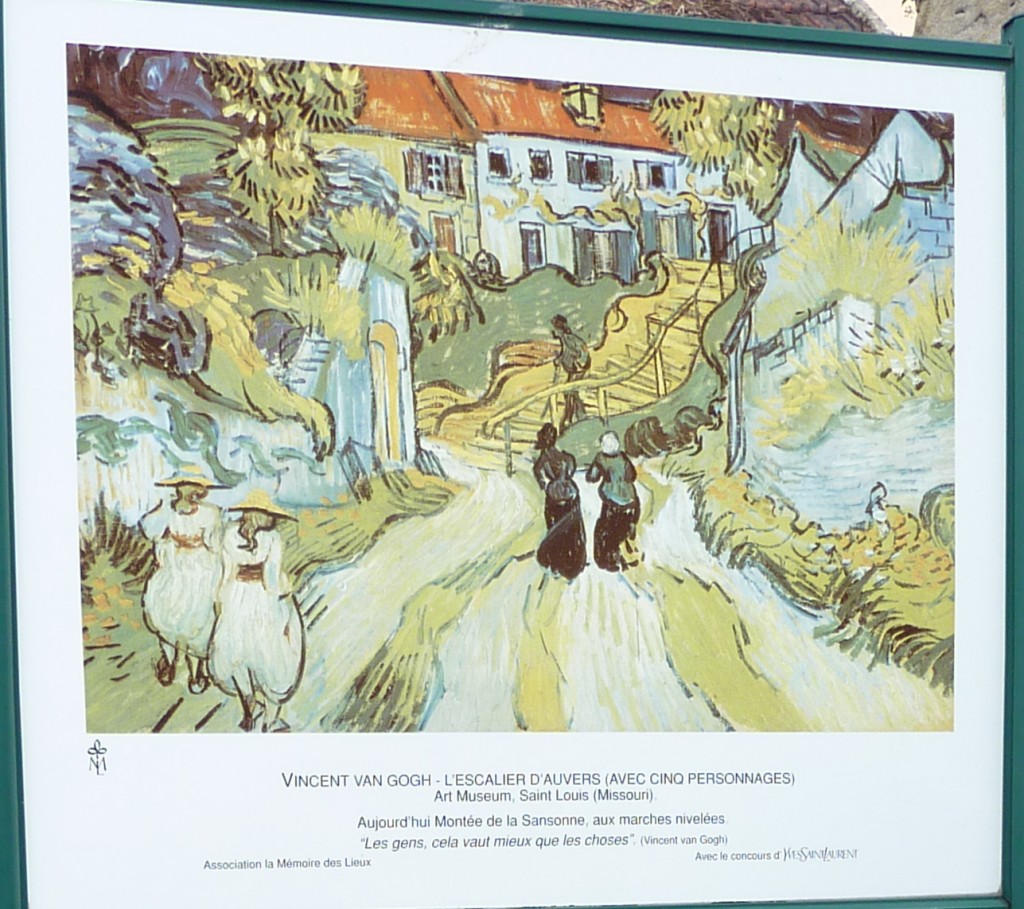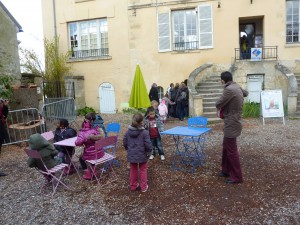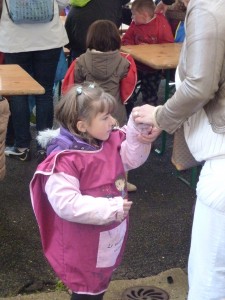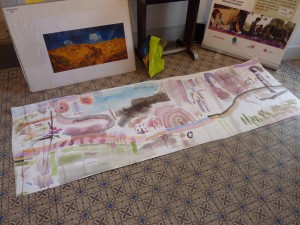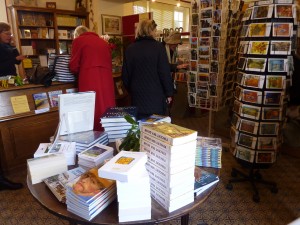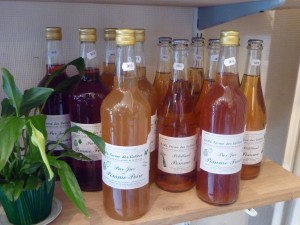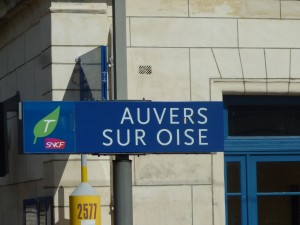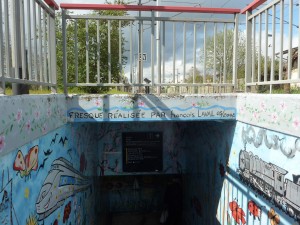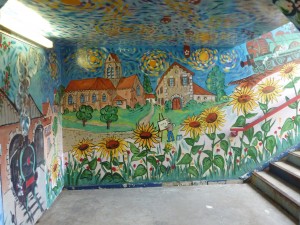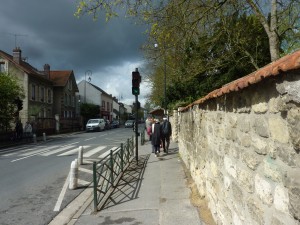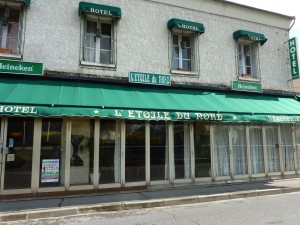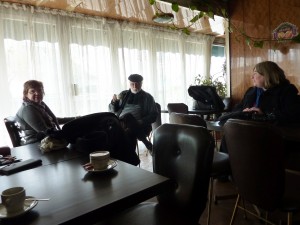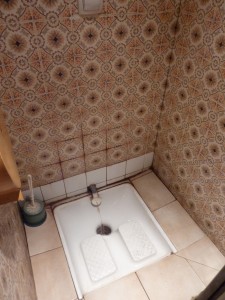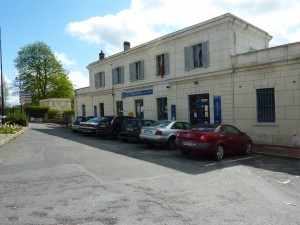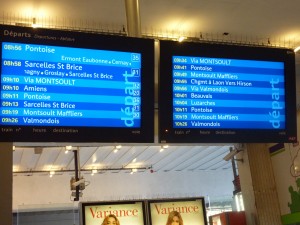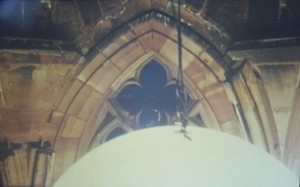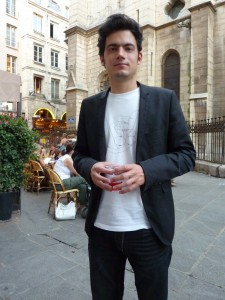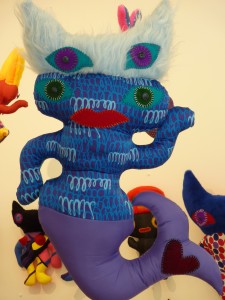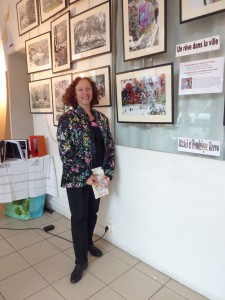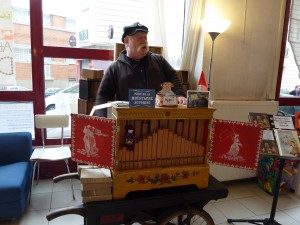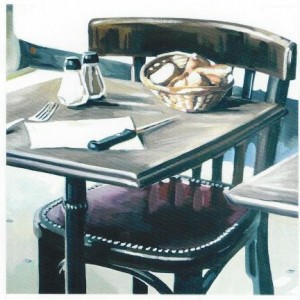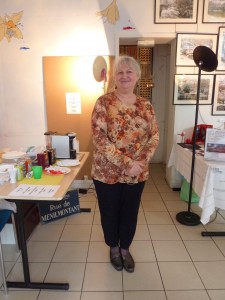After lunch at Auberge Ravaux, we assembled for a tour of the village. This was led by Anne-Claire, a Dutch woman, who took us from point to point to show us where Van Gogh had painted many of his pictures of the town. During the tour, she taught us the Dutch pronunciation of Van Gogh’s name.
To pronounce “Gogh” correctly, one makes a sound similar to the clearing of the throat. Say “Gaugh,” where the “augh” is pronounced deep in the throat. “Gaugh” rhymes with “cough,” except that it does not finish with the “f” sound. If you can say “cough” without the “f,” and you will be able to say “Gaugh.” A little practice and you will get it!
Anne-Claire stopped in a park in front of a statue of Van Gogh by Ossip Zadkine. After a brief presentation she asked the men to break off from the group while she took the women behind the statue. There, they performed some kind of ritual known only to women and came back smiling. We, the men, were perplexed, but said nothing.
During the tour, Anne-Claire recounted the tormented life of Van Gogh. He was difficult to get along with; he failed at many things that he tried; he suffered severe mental and health problems; he lived in extreme poverty; he sold only one of his paintings and couldn’t give the others away; he finally shot himself out of despair. He couldn’t even commit suicide properly and took two agonizing days to die. But out of this torment came the stunning works of art that the world admires today.
We went behind the village church, the subject of one of the most famous of Van Gogh’s paintings. Van Gogh incongruously included the figure of a woman wearing a Dutch bonnet in the painting.
Anne-Claire took us along a muddy path to the village cemetery to view the graves of Van Gogh and his brother Théodore. The two were very close, and the younger Théodore supported the older Vincent, sending him a check for 150 francs every month. The voluminous written correspondence between the brothers has been preserved, giving art historians a look at the intimate details of Van Gogh’s life.
Tomorrow: a visit to the Absinthe Museum
Like our blog? Join us on Facebook!

